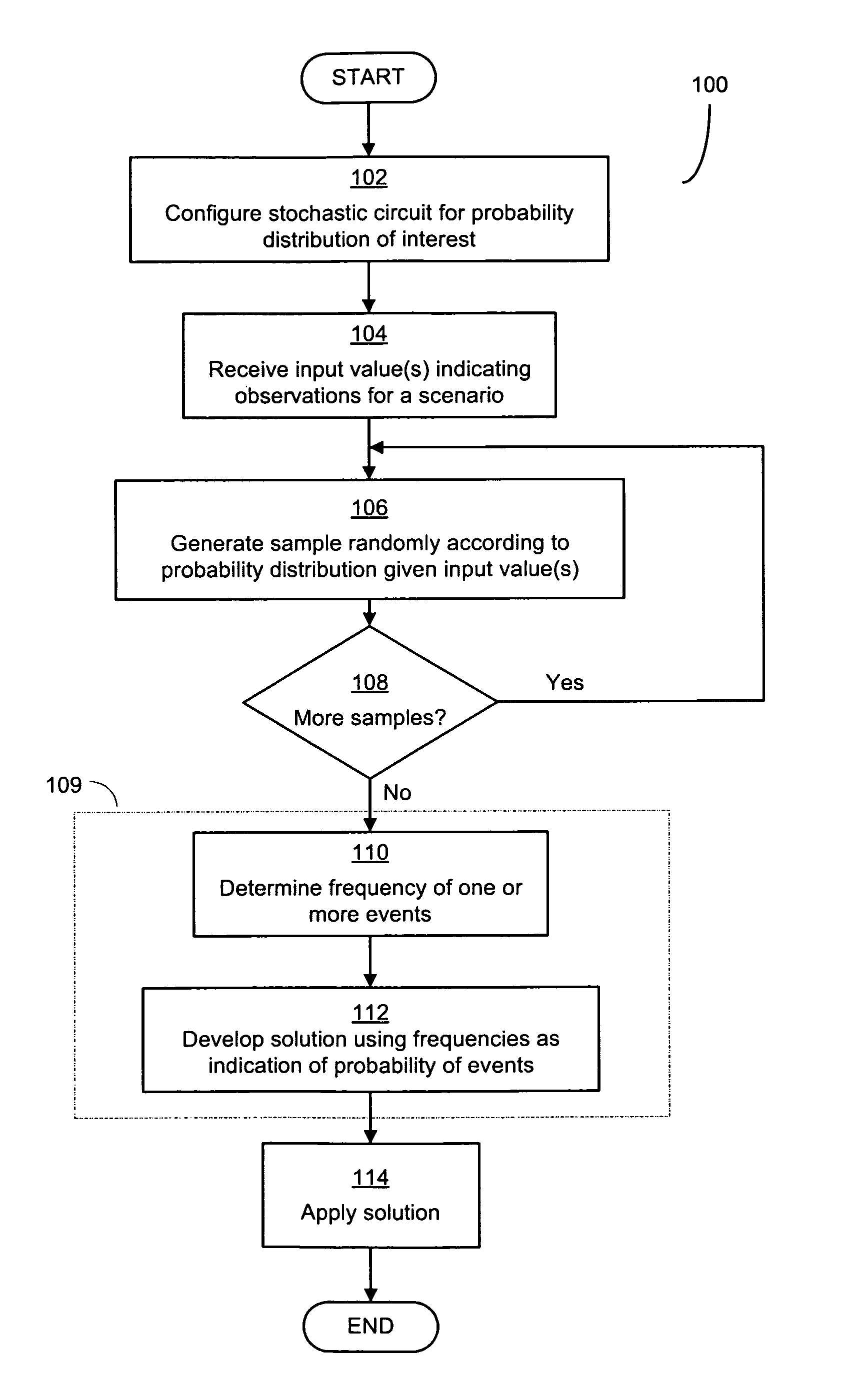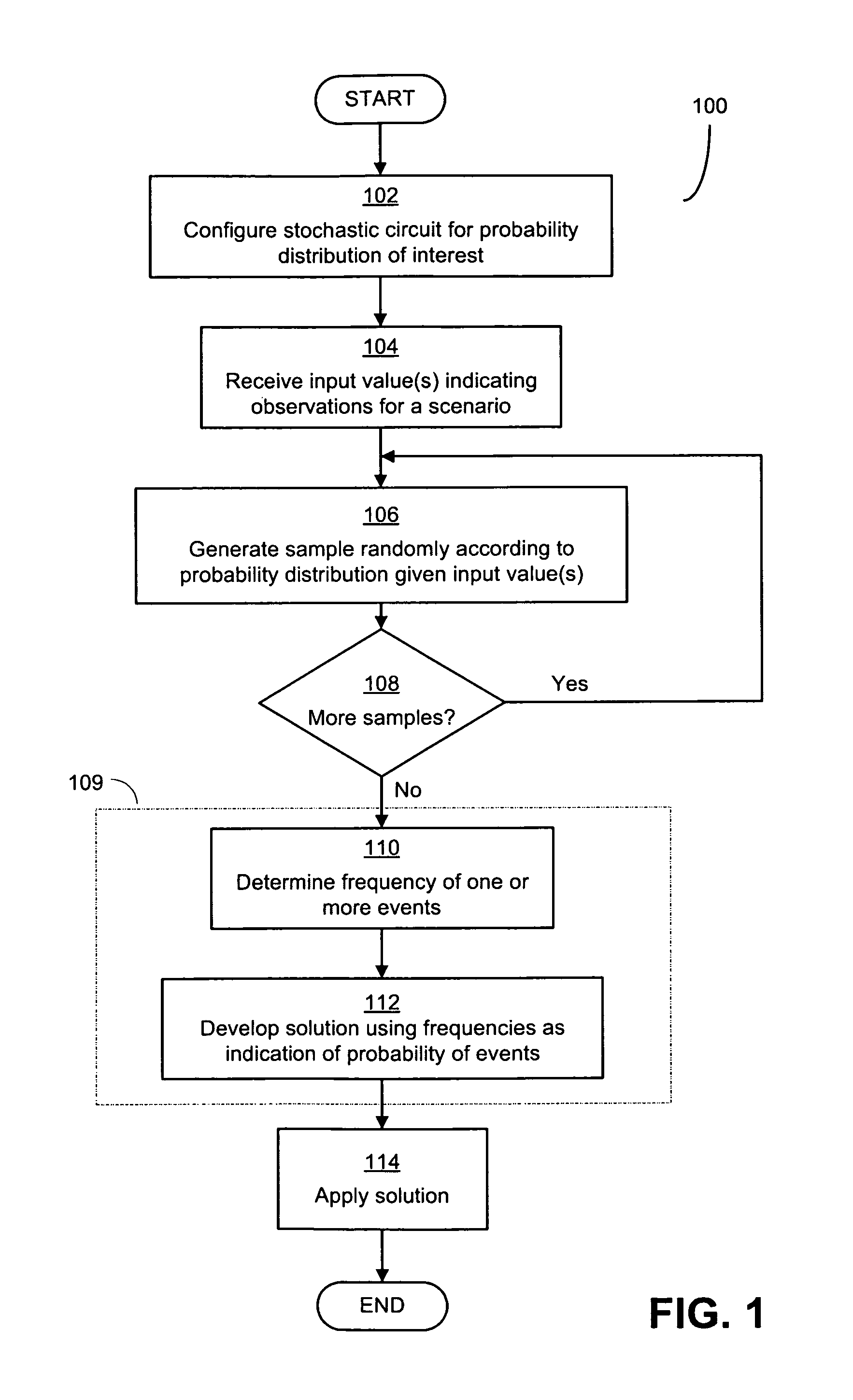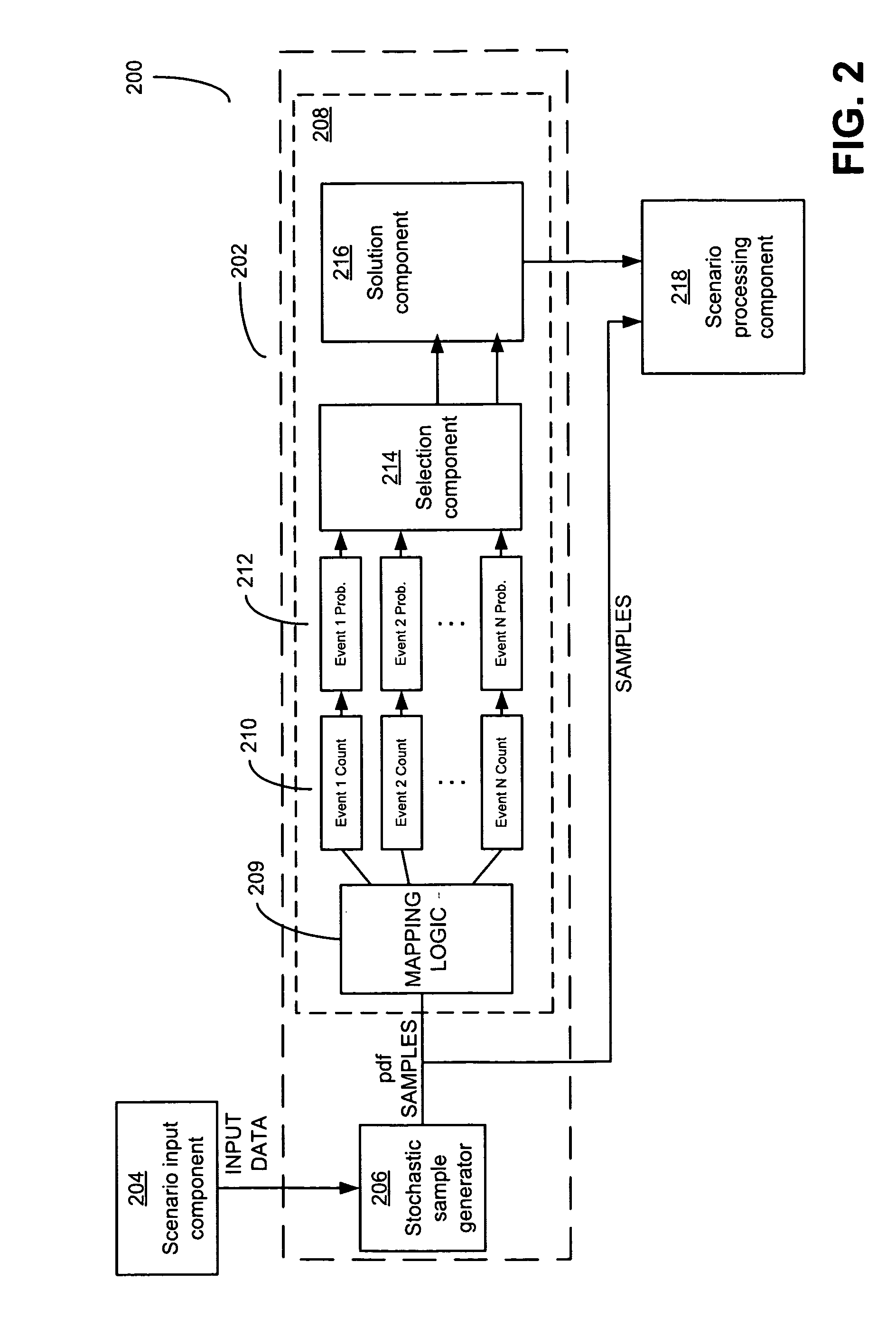Combinational stochastic logic
a stochastic logic and stochastic logic technology, applied in the field of combinatorial stochastic logic, can solve the problems of complex process, inability to compute a parameter value in a scenario, and decision giving rise to a give or a tak
- Summary
- Abstract
- Description
- Claims
- Application Information
AI Technical Summary
Benefits of technology
Problems solved by technology
Method used
Image
Examples
Embodiment Construction
[0041]Applicants have recognized and appreciated that conventional approaches to solving stochastic problems electronically are inherently limited because they use deterministic computers. As a result, such solutions are based on deterministic approximations of stochastic processes. The deterministic solutions tend to use high-precision floating point arithmetic. Such approximations may require amounts of time and / or processing resources that are unacceptably or inefficiently large.
[0042]As an example, deterministic approximations of a stochastic problem may involve determining first each potential event that may give rise to a set of observations and then determining the likelihood of its occurrence before making a decision. For a given problem the number of potential events may be vast, and it may take a lot of time to compute probabilities all of the events.
[0043]As a scenario changes over time (e.g., as inputs vary or are refined), it may be necessary to recompute these probabil...
PUM
 Login to View More
Login to View More Abstract
Description
Claims
Application Information
 Login to View More
Login to View More - R&D
- Intellectual Property
- Life Sciences
- Materials
- Tech Scout
- Unparalleled Data Quality
- Higher Quality Content
- 60% Fewer Hallucinations
Browse by: Latest US Patents, China's latest patents, Technical Efficacy Thesaurus, Application Domain, Technology Topic, Popular Technical Reports.
© 2025 PatSnap. All rights reserved.Legal|Privacy policy|Modern Slavery Act Transparency Statement|Sitemap|About US| Contact US: help@patsnap.com



